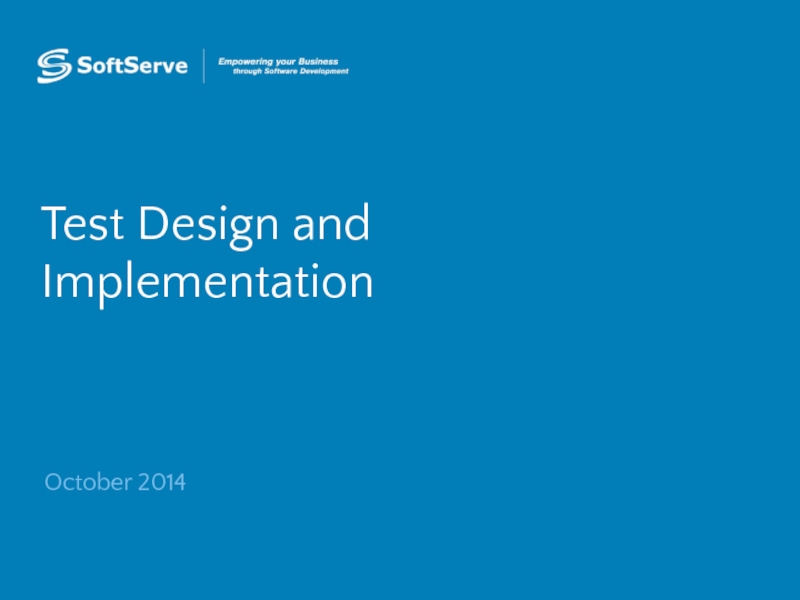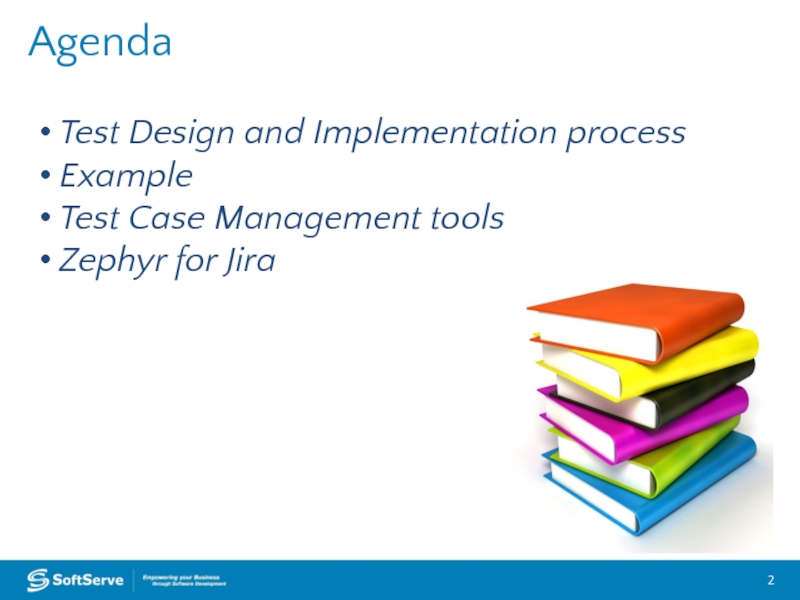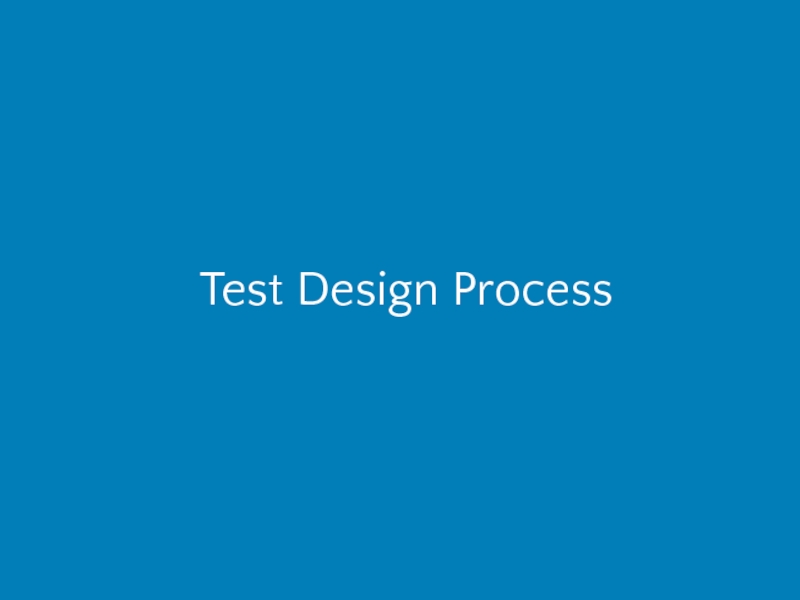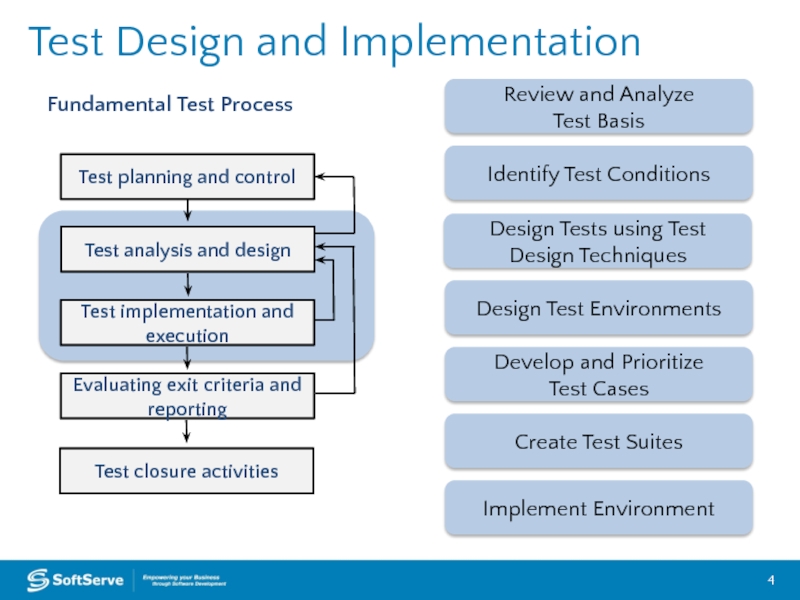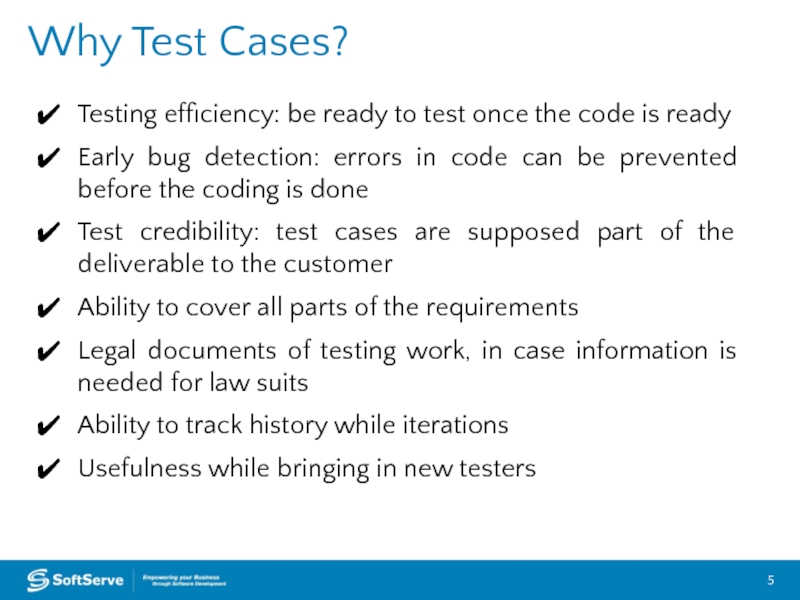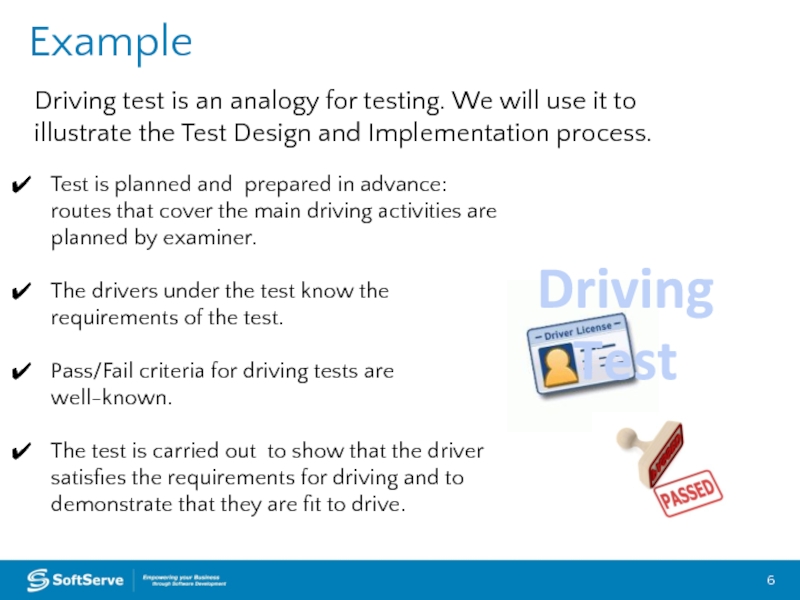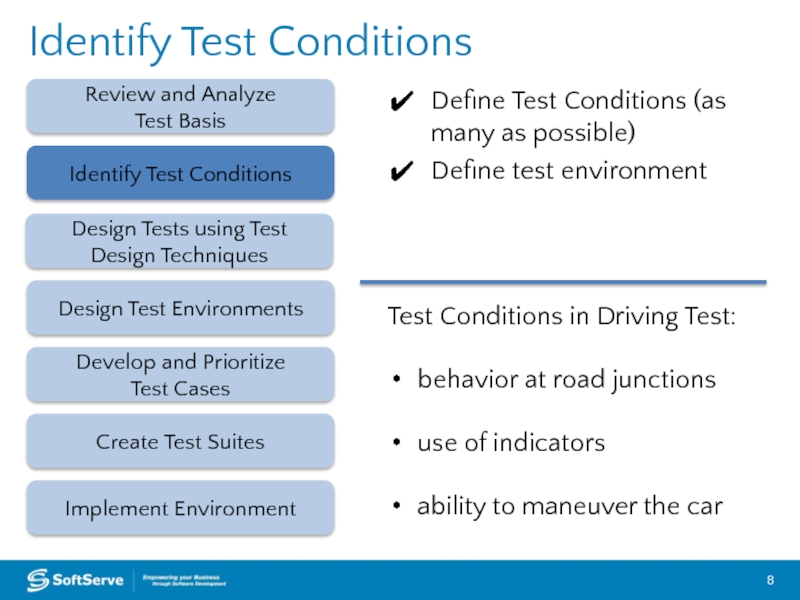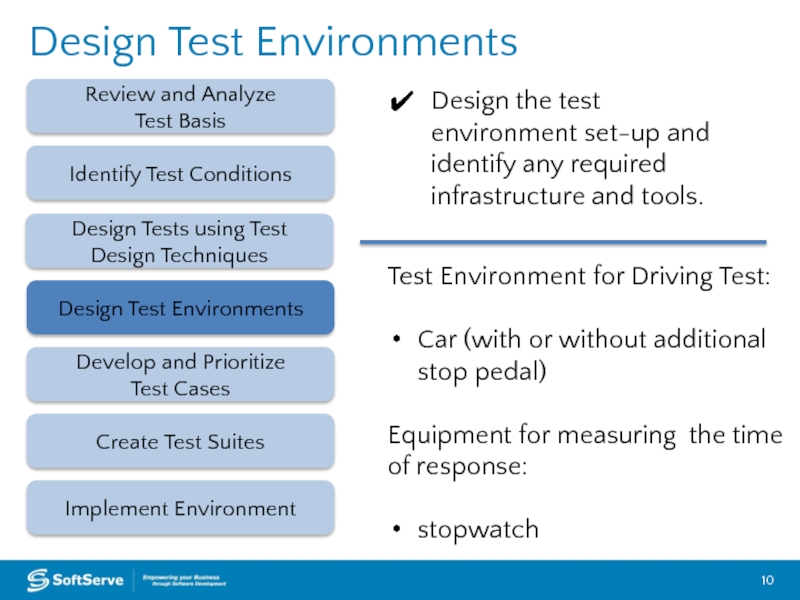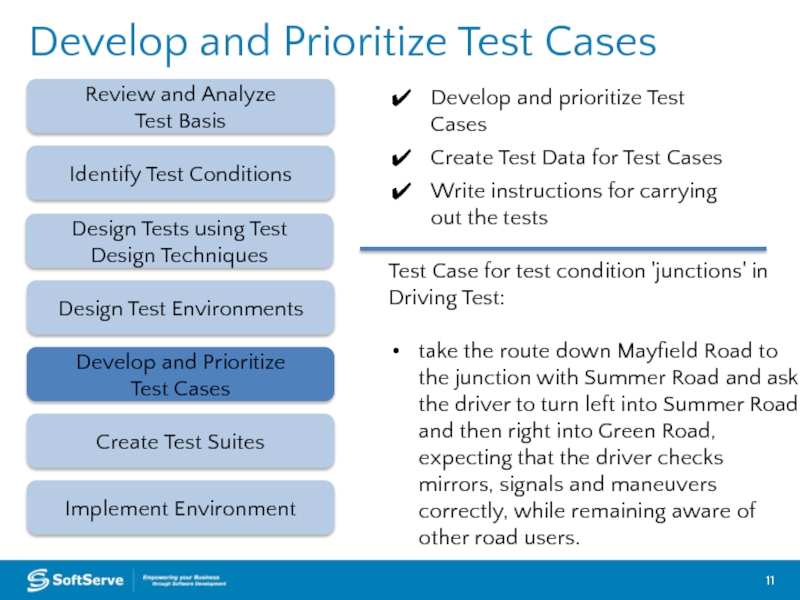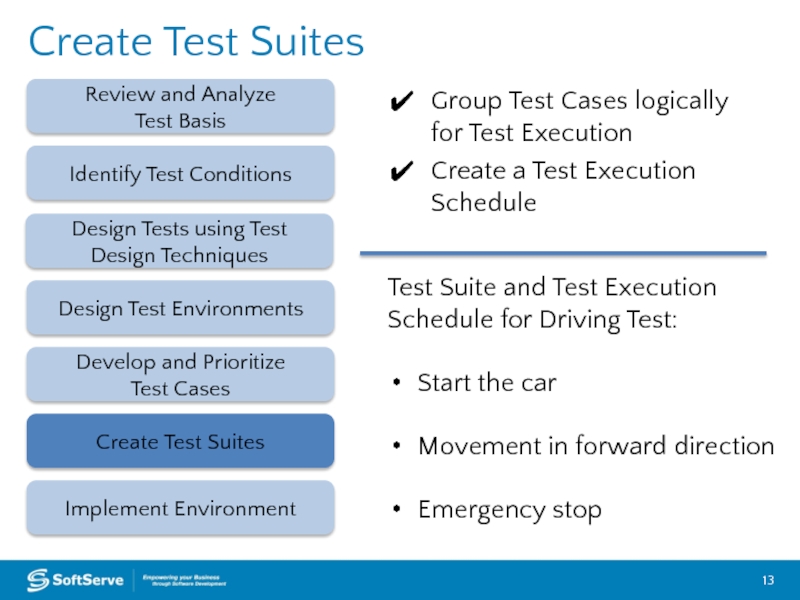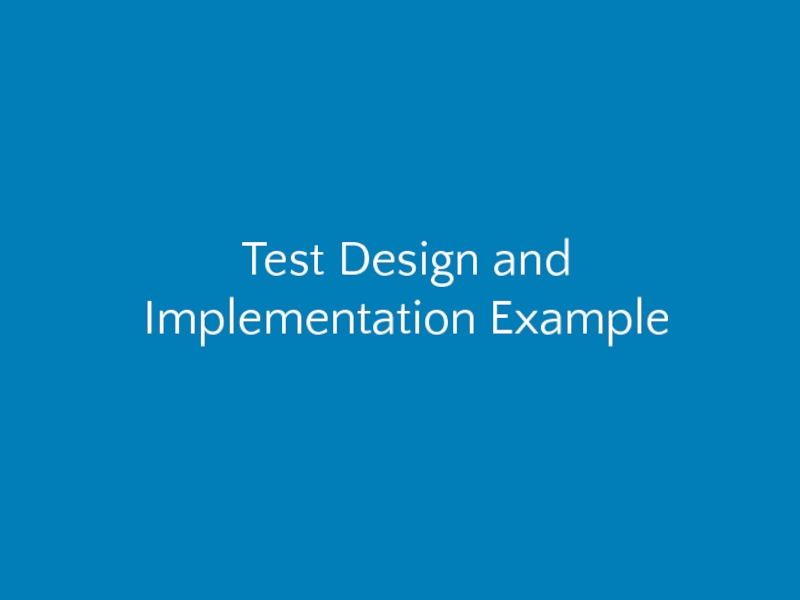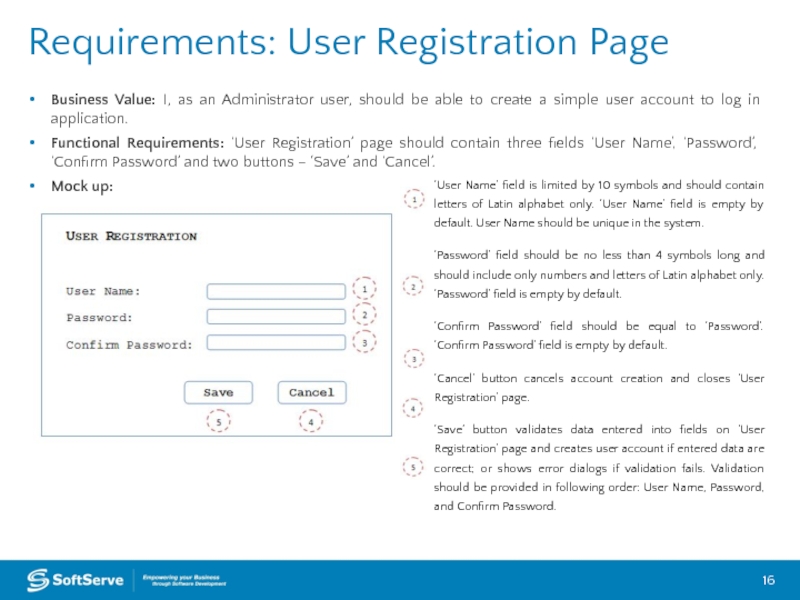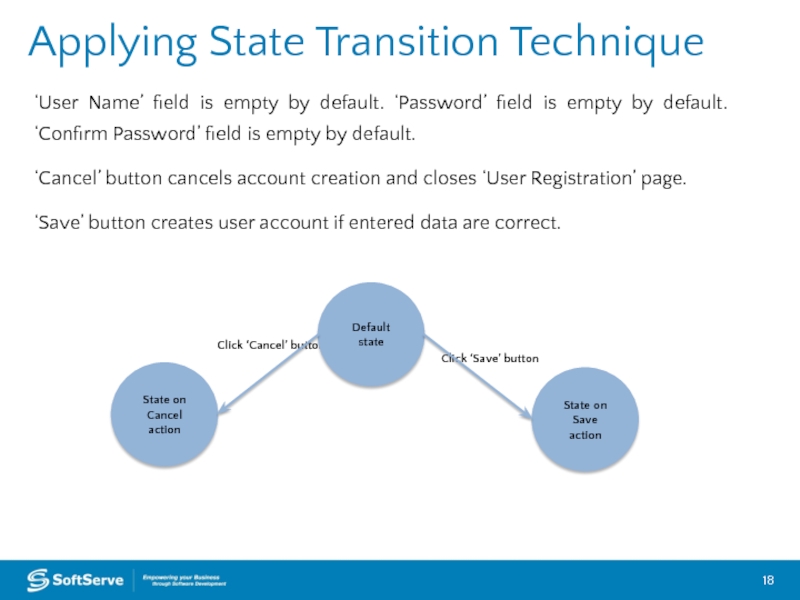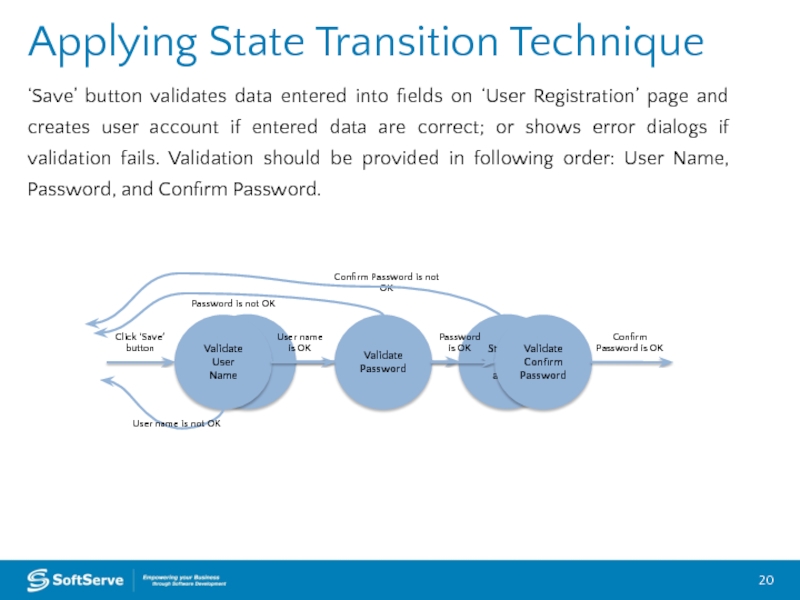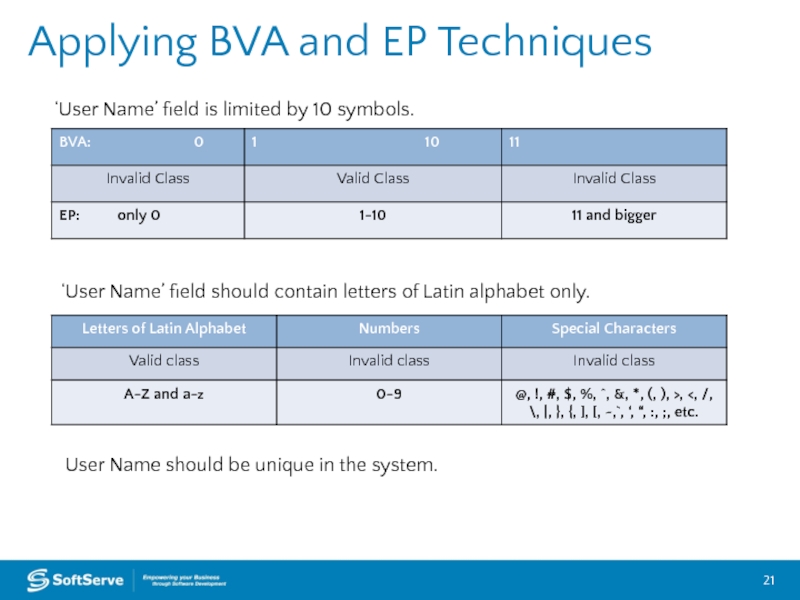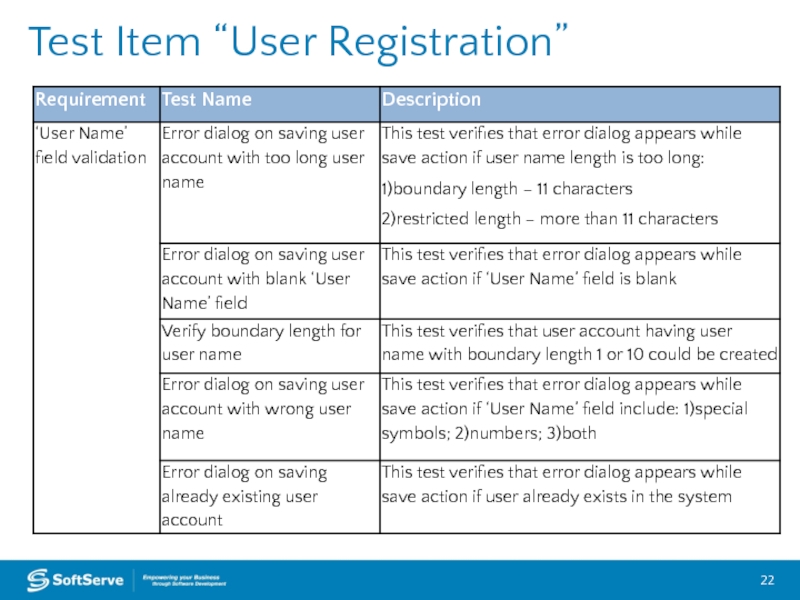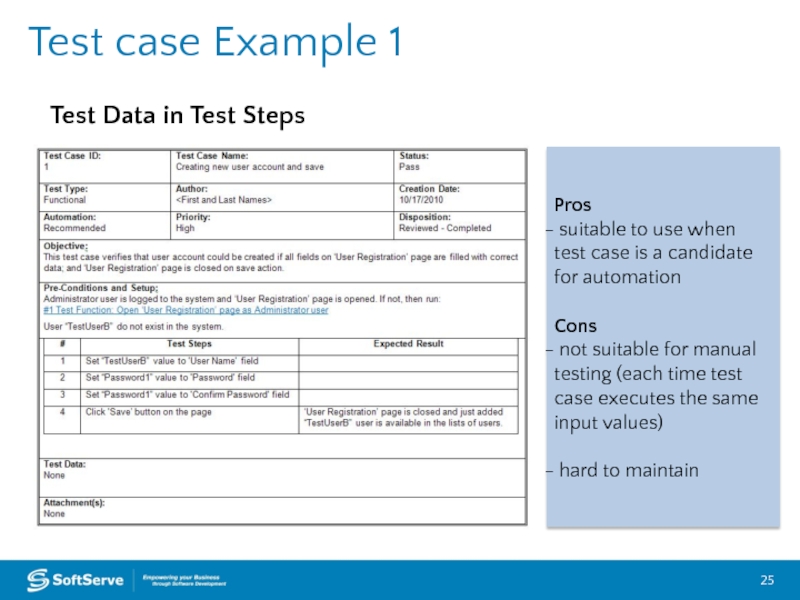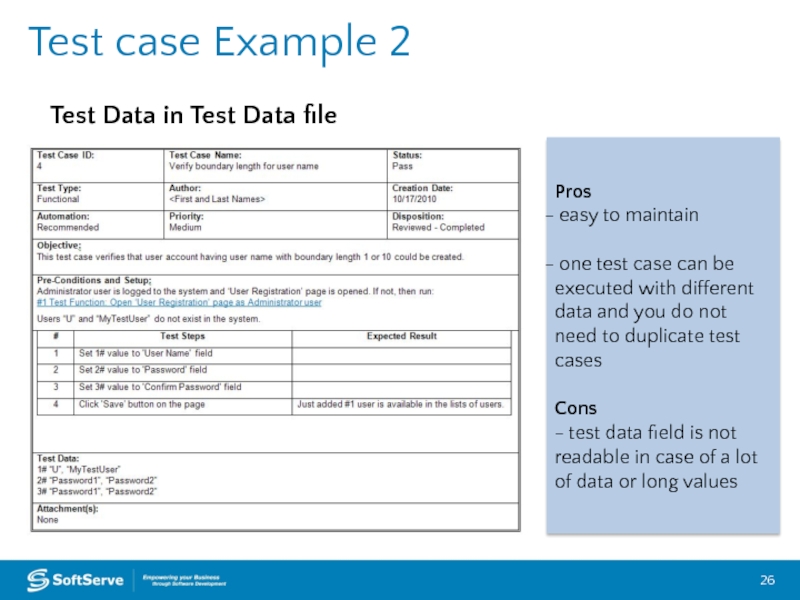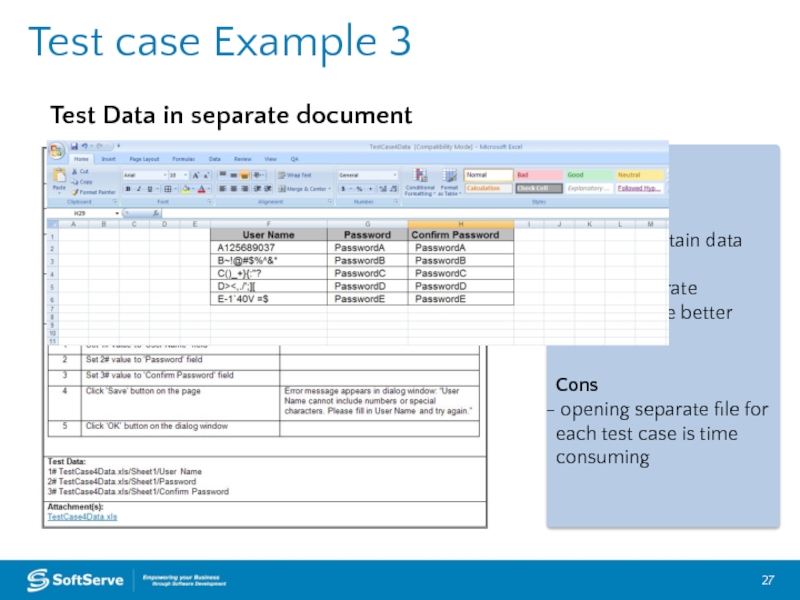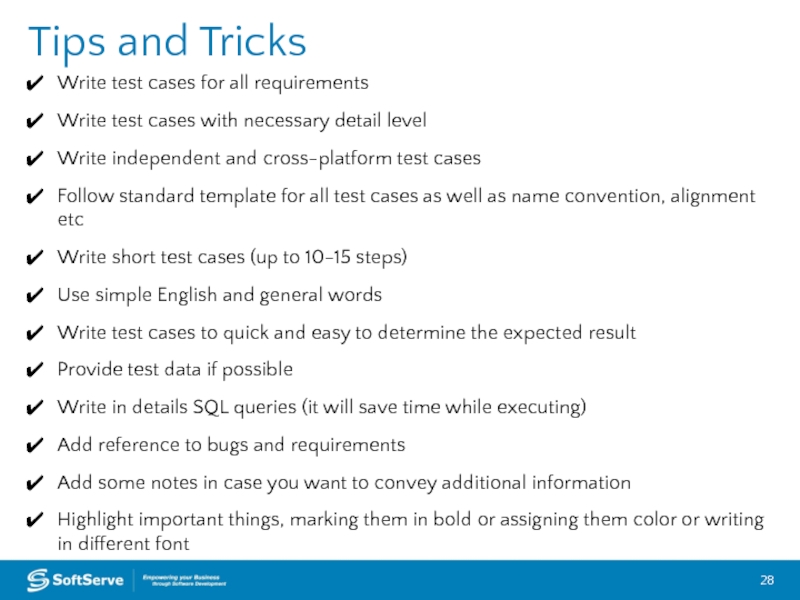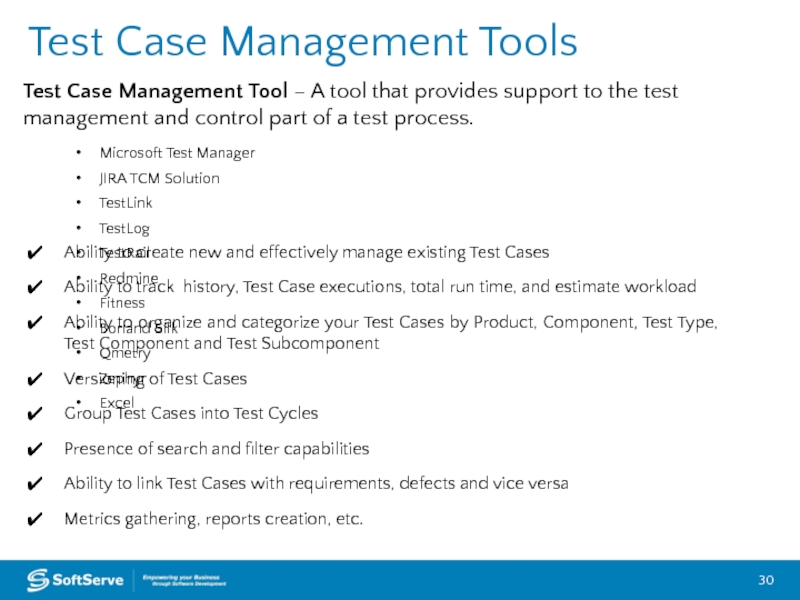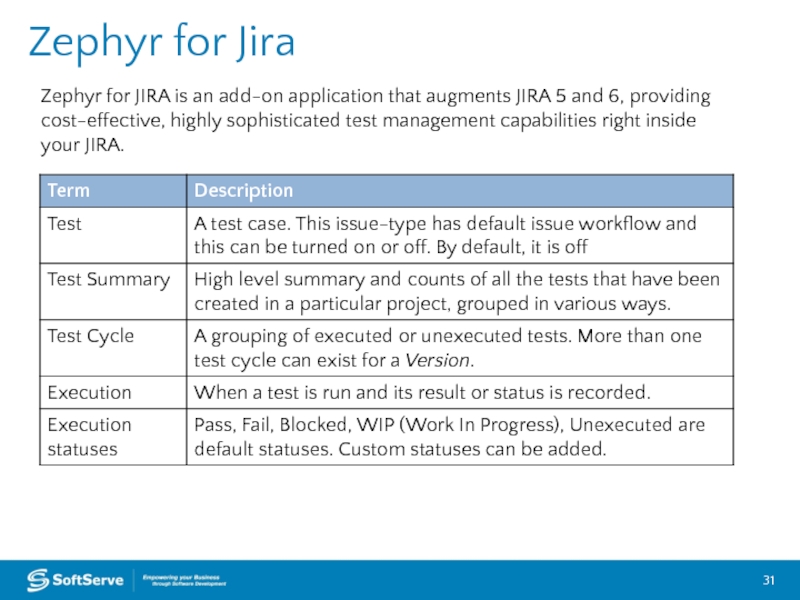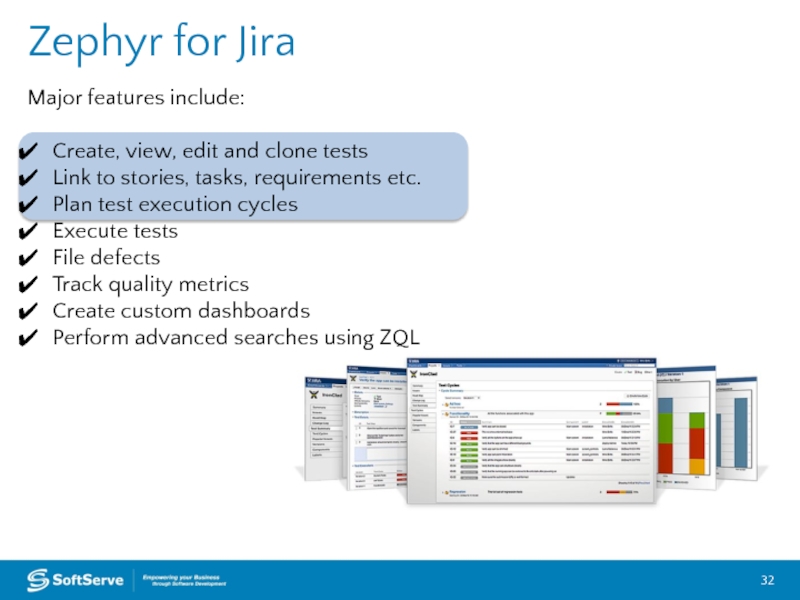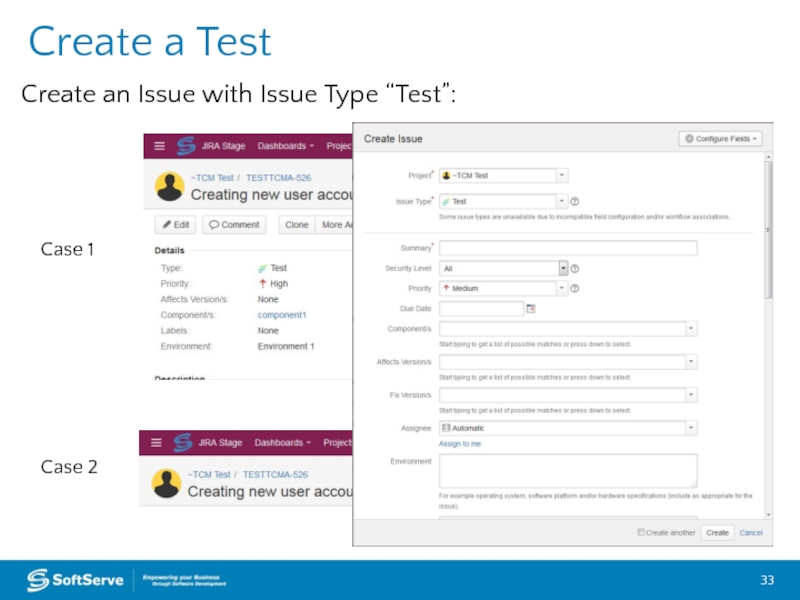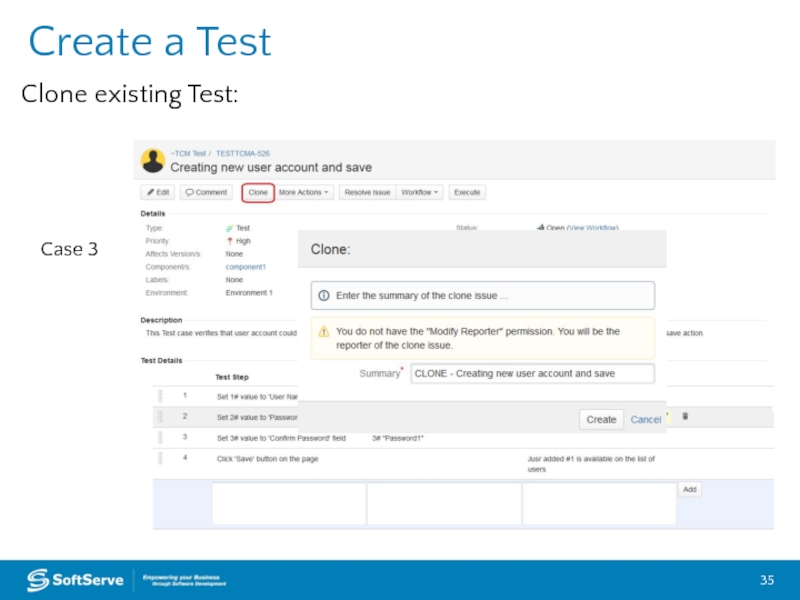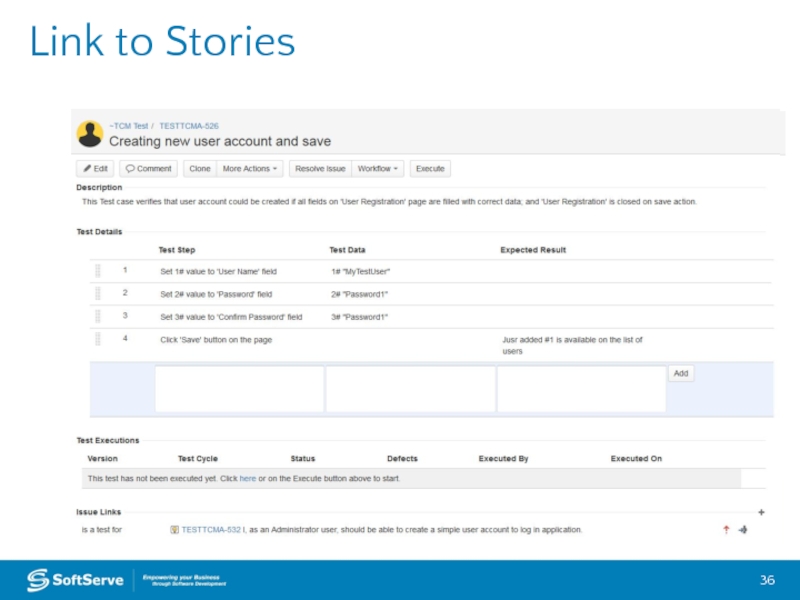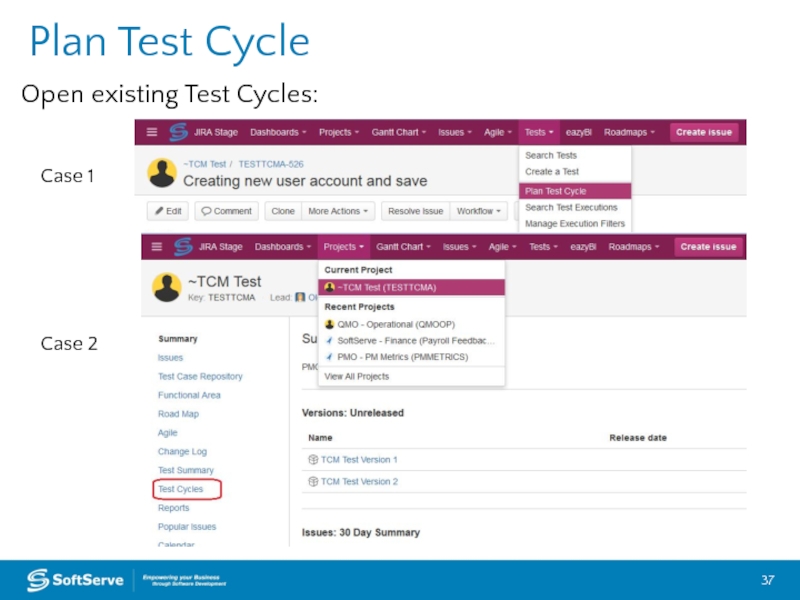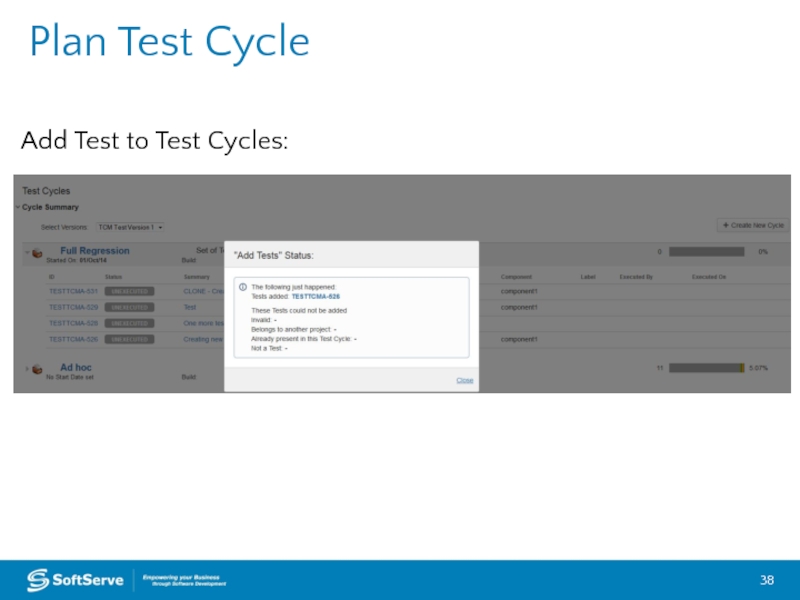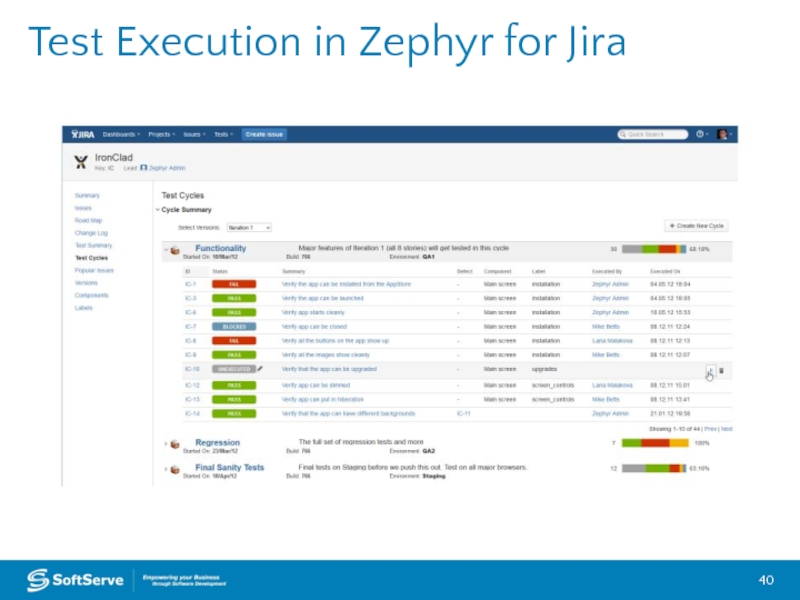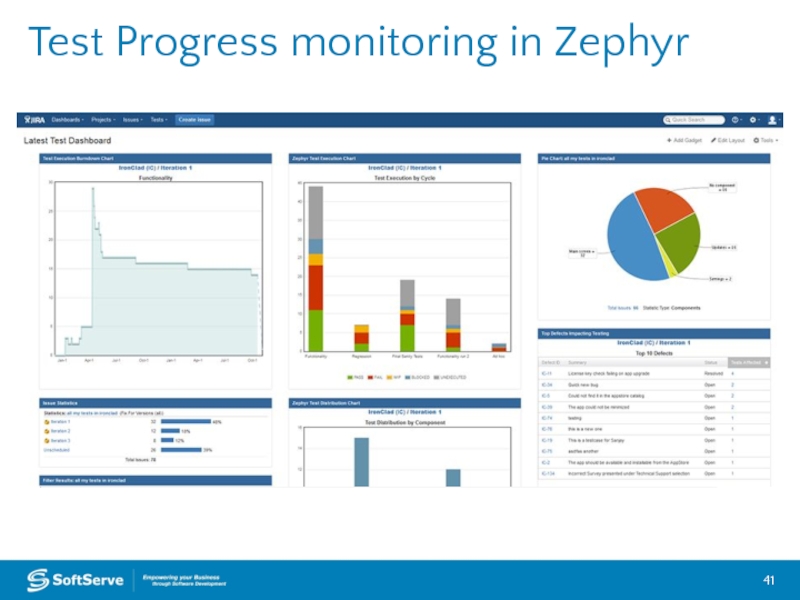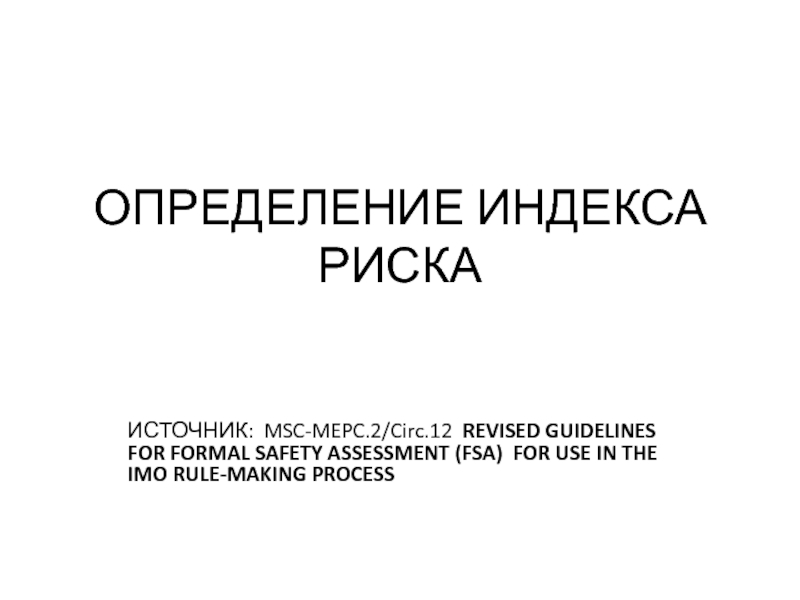- Главная
- Разное
- Дизайн
- Бизнес и предпринимательство
- Аналитика
- Образование
- Развлечения
- Красота и здоровье
- Финансы
- Государство
- Путешествия
- Спорт
- Недвижимость
- Армия
- Графика
- Культурология
- Еда и кулинария
- Лингвистика
- Английский язык
- Астрономия
- Алгебра
- Биология
- География
- Детские презентации
- Информатика
- История
- Литература
- Маркетинг
- Математика
- Медицина
- Менеджмент
- Музыка
- МХК
- Немецкий язык
- ОБЖ
- Обществознание
- Окружающий мир
- Педагогика
- Русский язык
- Технология
- Физика
- Философия
- Химия
- Шаблоны, картинки для презентаций
- Экология
- Экономика
- Юриспруденция
Test. Design and implementation презентация
Содержание
- 1. Test. Design and implementation
- 2. Agenda Test Design and Implementation process Example Test Case Management tools Zephyr for Jira
- 3. Test Design Process
- 4. Test Design and Implementation Test planning
- 5. Why Test Cases? Testing efficiency: be ready
- 6. Example Driving test is an analogy for
- 7. Review and Analyze Test Basis Review Test
- 8. Identify Test Conditions Review and Analyze
- 9. Design Tests Review and Analyze Test
- 10. Design Test Environments Review and Analyze
- 11. Test Case for test condition 'junctions' in
- 12. Test Cases development Attachment Test Case Name
- 13. Create Test Suites Review and Analyze
- 14. Implement Test Environments Review and Analyze
- 15. Test Design and Implementation Example
- 16. Requirements: User Registration Page Business Value: I,
- 17. Requirements: Error Messages
- 18. Click ‘Save’ button Click ‘Cancel’ button
- 19. Applying State Transition Technique
- 20. Applying State Transition Technique State on Save
- 21. Applying BVA and EP Techniques ‘User Name’
- 22. Test Item “User Registration”
- 23. Test Item “User Registration”
- 24. Test Case for ‘Confirm Password’ field validation
- 25. Test case Example 1 Pros suitable
- 26. Test case Example 2 Pros easy
- 27. Test case Example 3 Pros easy
- 28. Tips and Tricks Write test cases for
- 29. Test Case Management Tools: Zephyr for Jira
- 30. Test Case Management Tools Test Case Management
- 31. Zephyr for Jira Zephyr for JIRA is
- 32. Major features include: Create,
- 33. Create a Test Case 1 Case 2 Create an Issue with Issue Type “Test”:
- 34. Create a Test Add Test Steps to the Test:
- 35. Create a Test Case 3 Clone existing Test:
- 36. Link to Stories
- 37. Plan Test Cycle Case 1 Case 2 Open existing Test Cycles:
- 38. Plan Test Cycle Add Test to Test Cycles:
- 39. Plan Test Cycle Create a new Test Cycles:
- 40. Test Execution in Zephyr for Jira
- 41. Test Progress monitoring in Zephyr
- 42. Thank you USA TELEPHONE Toll-Free: 866.687.3588 Office:
Слайд 4
Test Design and Implementation
Test planning and control
Test analysis and design
Test implementation
Evaluating exit criteria and reporting
Test closure activities
Fundamental Test Process
Review and Analyze
Test Basis
Design Test Environments
Create Test Suites
Implement Environment
Identify Test Conditions
Develop and Prioritize
Test Cases
Design Tests using Test Design Techniques
Слайд 5Why Test Cases?
Testing efficiency: be ready to test once the code
Early bug detection: errors in code can be prevented before the coding is done
Test credibility: test cases are supposed part of the deliverable to the customer
Ability to cover all parts of the requirements
Legal documents of testing work, in case information is needed for law suits
Ability to track history while iterations
Usefulness while bringing in new testers
Слайд 6Example
Driving test is an analogy for testing. We will use it
Test is planned and prepared in advance: routes that cover the main driving activities are planned by examiner.
The drivers under the test know the requirements of the test.
Pass/Fail criteria for driving tests are well-known.
The test is carried out to show that the driver satisfies the requirements for driving and to demonstrate that they are fit to drive.
Driving Test
Слайд 7Review and Analyze Test Basis
Review Test Basis
Evaluate testability of the
Clarify requirements
Review and Analyze
Test Basis
Design Test Environments
Create Test Suites
Implement Environment
Identify Test Conditions
Develop and Prioritize
Test Cases
Design Tests using Test Design Techniques
Requirement to be clarified in Driving Test:
Emergency stop: the driver must stop the car quickly, safely and without loss of control
Слайд 8Identify Test Conditions
Review and Analyze
Test Basis
Design Test Environments
Create Test Suites
Implement
Identify Test Conditions
Develop and Prioritize
Test Cases
Design Tests using Test Design Techniques
Define Test Conditions (as many as possible)
Define test environment
Test Conditions in Driving Test:
behavior at road junctions
use of indicators
ability to maneuver the car
Слайд 9Design Tests
Review and Analyze
Test Basis
Design Test Environments
Create Test Suites
Implement Environment
Identify
Develop and Prioritize
Test Cases
Design Tests using Test Design Techniques
Define Tests for defined Conditions
Tests for ‘behavior at road junctions’ Test Conditions in Driving Test:
T-junctions
cross roads
Слайд 10Design Test Environments
Review and Analyze
Test Basis
Design Test Environments
Create Test Suites
Implement
Identify Test Conditions
Develop and Prioritize
Test Cases
Design Tests using Test Design Techniques
Design the test environment set-up and identify any required infrastructure and tools.
Test Environment for Driving Test:
Car (with or without additional stop pedal)
Equipment for measuring the time of response:
stopwatch
Слайд 11Test Case for test condition 'junctions' in Driving Test:
take the route
Develop and Prioritize Test Cases
Review and Analyze
Test Basis
Design Test Environments
Create Test Suites
Implement Environment
Identify Test Conditions
Develop and Prioritize
Test Cases
Design Tests using Test Design Techniques
Develop and prioritize Test Cases
Create Test Data for Test Cases
Write instructions for carrying out the tests
Слайд 12Test Cases development
Attachment
Test Case Name / Summary
Description / Objective
Priority
Test Steps
Expected Result
Test
Test Case ID
Test Case Type
Pre-condition
Environment
Test Case Structure
Слайд 13Create Test Suites
Review and Analyze
Test Basis
Design Test Environments
Create Test Suites
Implement
Identify Test Conditions
Develop and Prioritize
Test Cases
Design Tests using Test Design Techniques
Group Test Cases logically for Test Execution
Create a Test Execution Schedule
Test Suite and Test Execution Schedule for Driving Test:
Start the car
Movement in forward direction
Emergency stop
Слайд 14Implement Test Environments
Review and Analyze
Test Basis
Design Test Environments
Create Test Suites
Implement
Identify Test Conditions
Develop and Prioritize
Test Cases
Design Tests using Test Design Techniques
Implement and verify Test Environment
Test Environment for Driving Test:
Car is available
Car is equipped by additional stop pedal
Additional stop pedal works well
Слайд 16Requirements: User Registration Page
Business Value: I, as an Administrator user, should
Functional Requirements: ‘User Registration’ page should contain three fields ‘User Name’, ‘Password’, ‘Confirm Password’ and two buttons – ‘Save’ and ‘Cancel’.
Mock up:
‘User Name’ field is limited by 10 symbols and should contain letters of Latin alphabet only. ‘User Name’ field is empty by default. User Name should be unique in the system.
‘Password’ field should be no less than 4 symbols long and should include only numbers and letters of Latin alphabet only. ‘Password’ field is empty by default.
‘Confirm Password’ field should be equal to ‘Password’. ‘Confirm Password’ field is empty by default.
‘Cancel’ button cancels account creation and closes ‘User Registration’ page.
‘Save’ button validates data entered into fields on ‘User Registration’ page and creates user account if entered data are correct; or shows error dialogs if validation fails. Validation should be provided in following order: User Name, Password, and Confirm Password.
Слайд 18Click ‘Save’ button
Click ‘Cancel’ button
Applying State Transition Technique
State on Cancel
State on Save action
Default state
‘User Name’ field is empty by default. ‘Password’ field is empty by default. ‘Confirm Password’ field is empty by default.
‘Cancel’ button cancels account creation and closes ‘User Registration’ page.
‘Save’ button creates user account if entered data are correct.
Слайд 20Applying State Transition Technique
State on Save action
Default state
Click ‘Save’
button
Validate Password
Click ‘Save’
button
Validate
User name
is OK
Validate Confirm Password
Password
is OK
Confirm Password is OK
‘Save’ button validates data entered into fields on ‘User Registration’ page and creates user account if entered data are correct; or shows error dialogs if validation fails. Validation should be provided in following order: User Name, Password, and Confirm Password.
User name is not OK
Password is not OK
Confirm Password is not OK
Слайд 21Applying BVA and EP Techniques
‘User Name’ field is limited by 10
‘User Name’ field should contain letters of Latin alphabet only.
User Name should be unique in the system.
Слайд 24Test Case for ‘Confirm Password’ field validation
Test Case
Example 1 – Test Data in Test Steps
Example 2 – Test Data in Test Data field
Example 3 – Test Data in separate document
Слайд 25Test case Example 1
Pros
suitable to use when test case is
Cons
not suitable for manual testing (each time test case executes the same input values)
hard to maintain
Test Data in Test Steps
Слайд 26Test case Example 2
Pros
easy to maintain
one test case can
Cons
- test data field is not readable in case of a lot of data or long values
Test Data in Test Data file
Слайд 27Test case Example 3
Pros
easy to maintain data
data in separate
Cons
opening separate file for each test case is time consuming
Test Data in separate document
Слайд 28Tips and Tricks
Write test cases for all requirements
Write test cases
Write independent and cross-platform test cases
Follow standard template for all test cases as well as name convention, alignment etc
Write short test cases (up to 10-15 steps)
Use simple English and general words
Write test cases to quick and easy to determine the expected result
Provide test data if possible
Write in details SQL queries (it will save time while executing)
Add reference to bugs and requirements
Add some notes in case you want to convey additional information
Highlight important things, marking them in bold or assigning them color or writing in different font
Слайд 30Test Case Management Tools
Test Case Management Tool – A tool that
Microsoft Test Manager
JIRA TCM Solution
TestLink
TestLog
TestRail
Redmine
Fitness
Borland Silk
Qmetry
Zephyr
Excel
Ability to create new and effectively manage existing Test Cases
Ability to track history, Test Case executions, total run time, and estimate workload
Ability to organize and categorize your Test Cases by Product, Component, Test Type, Test Component and Test Subcomponent
Versioning of Test Cases
Group Test Cases into Test Cycles
Presence of search and filter capabilities
Ability to link Test Cases with requirements, defects and vice versa
Metrics gathering, reports creation, etc.
Слайд 31Zephyr for Jira
Zephyr for JIRA is an add-on application that augments
Слайд 32
Major features include:
Create, view, edit and clone tests
Link to
Plan test execution cycles
Execute tests
File defects
Track quality metrics
Create custom dashboards
Perform advanced searches using ZQL
Zephyr for Jira
Слайд 42Thank you
USA TELEPHONE
Toll-Free: 866.687.3588
Office: 239.690.3111
UK TELEPHONE
Tel: 0207.544.8414
GERMAN TELEPHONE
Tel: 0692.602.5857
EMAIL
info@softserveinc.com
WEBSITE:
www.softserveinc.com
EUROPE
United Kingdom
Germany
The Netherlands
Ukraine
Bulgaria
US OFFICES
Austin, TX
Fort Myers, FL
Boston, MA
Newport Beach, CA
Salt Lake City, UT
